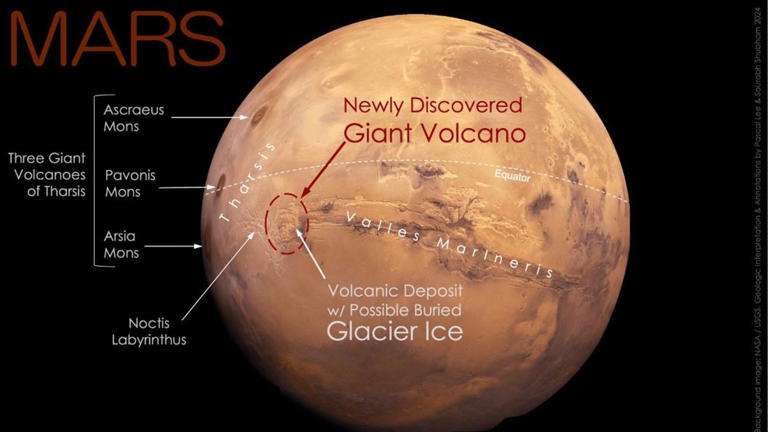Oxygen-rich Mars: Unveiling the Red Planet’s Earth-Like Past
Explore the intriguing discovery of oxygen-rich rocks on Mars, shedding light on the planet’s potentially habitable conditions in its ancient history. Join us on a journey to uncover the secrets of Mars’ geological past and its implications for the search for life beyond Earth.

© Provided by Live Science
Oxygen-rich Mars: Unveiling the Red Planet’s Earth-Like Past
Introduction
Mars, our neighboring planet, has long fascinated scientists with its mysterious landscapes and potential for harboring life. Recent findings from NASA’s Curiosity rover have reignited this curiosity, revealing clues that suggest Mars may have once resembled Earth more closely than we previously thought.
Discovering Martian Rocks
As Curiosity roamed the surface of Mars, it stumbled upon a collection of rocks rich in manganese oxide—a chemical compound that hints at a bygone era when Mars may have boasted Earth-like oxygen levels. This discovery has sparked excitement among scientists, prompting them to reconsider our understanding of the Red Planet’s ancient past.
Unraveling Mars’ Geological History
The presence of manganese oxide in these Martian rocks offers tantalizing insights into the planet’s geological evolution. Similar formations on Earth are often associated with microbial activity and oxygen-rich environments, raising the possibility that Mars was once a more hospitable world teeming with the potential for life.
Analyzing Curiosity’s Findings
Using its advanced instruments, Curiosity meticulously analyzed the composition of these oxygen-rich rocks. The rover’s ChemCam instrument, which vaporizes tiny bits of rock with a laser, provided invaluable data that sheds light on Mars’ geological mysteries.
Implications for Martian Habitability
The discovery of oxygen-rich rocks on Mars raises intriguing questions about the planet’s past habitability. Could Mars have once supported life, much like Earth? While we have yet to find direct evidence of life on Mars, these findings offer new avenues for exploration and speculation.

© Provided by Space
Debating the Origins of Martian Minerals
While some scientists interpret the presence of manganese oxide as evidence of Mars’ Earth-like past, others remain skeptical. Jeffrey Catalano, a professor of Earth sciences, suggests that alternative explanations, such as non-biological processes, could account for these mineral formations.
Exploring Alternative Theories
Research conducted in 2022 proposed that manganese oxide could form on Mars through abiotic processes involving elements like chlorine and bromine. This alternative theory challenges traditional notions of Martian geology and opens up new avenues for scientific inquiry.
The Search for Life on Mars
As we continue to unravel the mysteries of Mars, the quest for life beyond Earth remains a central focus of exploration. While the discovery of oxygen-rich rocks provides tantalizing clues, the ultimate question of whether Mars ever hosted life still eludes us.
Conclusion
The discovery of oxygen-rich rocks on Mars offers a glimpse into the planet’s enigmatic past and its potential for harboring life. As we delve deeper into the mysteries of the Red Planet, we inch closer to unlocking the secrets of our cosmic neighbor and expanding our understanding of the universe. Join us on this journey of discovery as we unravel the mysteries of Mars and explore the possibility of life beyond Earth.
ALSO READ:
“Ingenuity’s Farewell: 5 Inspiring Lessons for Future Mars Exploration”



